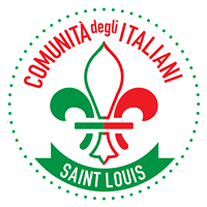|
EVELYN ASTEGNO Artist at Evelyn Astegno Art The primary intention of my religious paintings is depicting God’s love for us, a love that can be emanated from Himself or, indirectly, from any creation of Him. God’s love is absolute, regardless of how we perceive it in our limitations. In my work "The Madonna and Her Children" I wanted to represent a realistic young holy Mary loving her Son and loving us as her children as well. I painted her physical features in accordance with the descriptions in Marian apparitions to different saints and lay people as well. Although the colors of skin hair, and eyes differ from one description to another, I noticed how much the “shapes” and other details are actually similar. All the descriptions report the Holy Mary as incredibly beautiful. Marian apparitions are considered expressions of Mary’s ongoing motherly care for the Church and humanity. United to her Son, Mary is capable of a love that is difficult to imagine here on earth. Here is how St. Louis de Montfort describes her love in his book “True Devotions of Mary"; "she loves them tenderly, more tenderly than all the mothers in the world together. Take the maternal love of all the mothers of the world for their children. Pour all that love into the heart of one mother for an only child. That mother’s love would certainly be immense. Yet Mary’s love for each of her children has more tenderness than the love of that mother for her child." But how does the Holy Mary love us? First of all, she understands and feels our sufferings more than any other human could, as her martyrdom was longer and greater than all of the martyrs (although hidden to people), according to St. Alphonsus Liguori. Secondly, she shows us the path to eternal life and helps us avoid dangerous pitfalls. So, as she lovingly holds her Son who sleeps confidently in her arms and transmits her the originary love, she invites us under her mantle for protection, direction, and true comfort. The rough background, as well as the raw fabric, suggests the human/earthly nature for our Mother. The twelve stars symbolize the 12 Apostles and the 12 Tribes of Israel. Moreover, the ample circle in which they are inscribed, hint at the divine embrace that accompanies and evokes the one of Mary for Jesus and for us. My painting depicting the "Pietà", which I put the finishing touches on last week, has a different backstory. However, there is a direct correlation to my previous work "The Madonna and her Children". As some of you may know, I’m open to requests regarding subjects of faith if they are deeply felt by relatives, friends or just about anybody. I'll then paint these requests according to my interpretation. When I asked my dearest friend Robyn a few months ago (before she passed away) whether she had a favorite religious topic, she reluctantly mentioned (she didn’t want to push me) that she would love for me to paint a "Pietas", a popular depiction of the Blessed Mother Mary holding the deceased Christ crucified. She stressed that she saw a deep connection to my previous paintings, i.e., my painting of the crucifixion "The Glance of Love" and "The Madonna and Her Children". At first, I didn’t grasp the connection. Then, suddenly, it became clear. In this work, I used Robyn's reflection and I depict the Madonna still holding her Child, her crucified Son, with one hand, and with the other hand still reaching out to us her children as she is in my earlier painting. In my interpretation of this scene, this is not only an invitation for us to follow her Son but also the depiction of a loving mother as she offers her Son to us. Mary, a poor and lowly mother, offered the most important thing in her life, something more important to her than her own life, her only Son. She actively offers her Son to us in the midst of the deepest suffering she has ever experienced. The expression on her face is sorrowful yet loving at the same time. There is no greater love on earth than this act of sacrifice. This is my depiction of a divine love in Mary. I am a native of Vicenza in the Veneto region of north-eastern Italy. Currently I reside in St. Louis where I specialize in religious artworks. My paintings have been displayed in numerous galleries of art throughout the United States and Italy. These pieces are available for purchase. For inquiries, please contact me at 636-346-0764 or iceyes30@hotmail.com
0 Comments
GIORGIO NARDINI Guida turistica con Viaggi-USA A circa quattro ore da Chicago, Saint Louis si affaccia timida sul Mississippi sbirciando verso l'Illinois e protetta dal famoso arco di metallo che ne contraddistingue la skyline. Fondata da mercanti di pellicce francesi nel 1764, è ora una tranquilla città del Midwest con un’ottima reputazione nel campo dell'arte, dell'architettura, della musica blues, delle biotecnologie, della medicina e del baseball. I St. Louis Cardinals sono infatti tra le squadre più acclamate della Major League Baseball. L'America meno conosciuta, poco turistica e vera: Saint Louis è uno stop ideale durante un on the road per trascorrere uno o due giorni tra architettura moderna, baseball ed eventi (non perdete il Blues at the Arch ogni venerdì di Agosto). Ecco allora le principali attrazioni da non lasciarsi durante una visita in città: Gateway Arch e Old Courthouse Simbolo e attrazione più popolare della città, il Gateway Arch, costruito negli anni '60, è l'arco più alto del mondo. L'acciaio con il quale è ricoperto scintilla al sole e attrae più di quattro milioni di visitatori l'anno. Oltre ad osservarlo dall’esterno, è possibile entrarci e salire fino in cima tramite un avveniristico ascensore che porta i passeggeri sull’osservatorio. È aperto tutti i giorni dalle 8 alle 18 in inverno e dalle 8 alle 22 in estate. I biglietti sono acquistabili online o di persona alla Old Courthouse ad un prezzo di 3$ per la sola entrata al piano terra, che dà accesso anche al film sulla costruzione dell’arco. Per salire il prezzo è invece di 13$ per gli adulti e 10$ per i bambini (3-15). Il monumento fa parte del Jefferson National Expansion Memorial, gestito dal National Park Service, e non è necessario pagare il biglietto di 3$ se avete la tessera parchi. A due passi dal Gateway Arch, la Old Courthouse di St. Louis, è un palazzo di giustizia risalente al 1800. Qui Virginia Minor, un’attivista delle suffragette, cercò di votare durante le elezioni del 1872 e venne arrestata. All’interno potete conoscere una parte della storia degli Stati Uniti, soprattutto per quanto riguarda i primi insediamenti provenienti dall'Europa, la lotta contro la schiavitù e la guerra civile. La Old Courthouse fu infatti teatro di centinaia di battaglie per la libertà, ma una lasciò il segno più delle altre: nel 1857, Dred Scott e sua moglie denunciarono la schiavitù ma la Corte Suprema respinse le loro richieste poiché la costituzione non tutelava gli afroamericani. La vicenda divenne un caso storico e viene oggi ricordata come Dred Scott Decision o Dred Scott v. Sandford. L’entrata è gratuita ed è aperto tutti i giorni dalle 8 alle 17 in inverno e dalle 7:30 alle 20 durante l’estate. Al momento funge da visitor center per il Gateway Arch. Tower Grove Park e Missouri Botanical Garden Allontanandoci dal Mississippi e riversando verso l'entroterra, a circa 10 chilometri dalla Old Courthouse e dall’arco, troviamo due parchi: il Tower Grove Park e i giardini botanici del Missouri. Questi ultimi si espandono per 32 ettari tra orti, giardini e serre. Tra queste c'è la spettacolare cupola futuristica Climatron che racchiude una foresta tropicale: la fitta vegetazione lascia spazio di tanto in tanto a cascate, rocce e 2.800 piante. Tra le attrazioni anche un giardino giapponese e uno in stile vittoriano. Il Tower Grove Park è adiacente ai giardini botanici ed è lungo ben 25 chilometri. Comprende 11 padiglioni risalenti all’era vittoriana, edifici, statue, campi da tennis e da calcio. Durante i mesi autunnali si trasforma in un tripudio di giallo e arancione. Se capitate il sabato, non perdetevi il farmers’ market dalle 8:30 alle 12:30 vicino al Wading Pool Pavilion. Basilica Cattedrale di Saint Louis La Cathedral Basilica of Saint Louis, completata nel 1914 e dedicata a Luigi IX di Francia, custodisce la più grande collezione di mosaici al mondo fuori dalla Russia. I mosaici, che coprono una superficie di quasi 8,000 metri quadri, sono composti da 41,5 milioni di tessere e da più di 7,000 colori. Il seminterrato ospita delle cripte e un museo dedicato ai mosaici, mentre all’esterno sorge una statua in acciaio di 4 metri dedicata alla pace e alla giustizia tra le diverse razze. Papa Giovanni Paolo II visitò la cattedrale nel 1999 e a lui venne dedicata una targa con una sua frase, riportata appunto sulla statua. È aperta dalle 7 alle 17, mentre le messe vengono celebrate alle 7, alle 8 e alle 12. Forest Park Nelle vicinanze dalla cattedrale, il Forest Park copre più di 550 ettari utilizzati per musei, edifici, attrazioni e uno zoo, il famoso St Louis Zoo. Fate un giro in barca, scattate foto alle cascate e ad una delle costruzioni più antiche del parco, la Cabanne House, eretta nel 1876. Tra i musei vi segnalo il Missouri History Museum e il Saint Louis Art Museum. City Museum Entrare all’interno di una balena o esplorare delle caverne? Qui è possibile! Non è il classico museo con opere d’arte e statue, ma consiste al contrario in una serie di oggetti e costruzioni industriali esposti all’interno dell’ex edificio International Shoe risalente alla metà dell’Ottocento. Il City Museum è costituito da quattro piani e da una terrazza con un laghetto e un vero e proprio bus scolastico che sporge dal tetto. Scivoli, scale sinuose, un aereo e un drago sono solo alcune delle simpatiche costruzioni del coinvolgente museo di St. Louis. Biglietti a 14$ + tasse dai 3 anni in su, 12$ + tasse dopo le 17 il venerdì e il sabato. L’accesso alla terrazza richiede l’acquisto di un biglietto di 5$. I bambini sotto i due anni entrano gratis. Laumeier Sculpture Park Allontanandovi dal centro città raggiungerete il Laumeier Sculpture Park in 20 minuti. È l’occasione ideale per sgranchire le gambe ed immergersi nella natura nonché in una serie di particolari sculture. Tra più di 60 opere presenti spiccano The Way, completata nel 1980 e costruita mettendo insieme 18 barili d’olio per un altezza di 20 metri, e Eye, un occhio gigante del 2007 con una circonferenza di 12 metri. Ci sono alcuni percorsi da fare a piedi, tutti molto semplici e adatti a tutte le età. Il parco è gratuito e aperto tutti i giorni dalle 8:30 fino a trenta minuti dopo il tramonto. Busch Stadium È qui che giocano i famosi St. Louis Cardinals vincitori per ben 11 volte delle World Series di baseball. Ovviamente il suggerimento sarebbe quello di vedere una vera e propria partita dal vivo ma se non ne avete l’opportunità potete prendere in considerazione l’idea di fare un tour dello stadio. Potrete provare come ci si sente ad osservare il terreno di gioco dalle cabine di radiocronaca, osservare i trofei vinti dalla squadra di Saint Louis e sopratutto ammirare il bellissimo panorama che si può godere dai gradoni dello stadio sullo skyline della città e sul Gateway Arch. Potete trovare tutte le informazioni su orari e prezzi dei tour visitando il sito ufficiale dello stadio. Anheuser-Busch Brewery Se vi piace la birra Saint Louis, è la città che fa al caso vostro. Ovviamente non potete farvi mancare uno dei birrifici più famosi in città ovvero quello della Anheuser-Busch, uno dei maggior produttori di birra statunitense nota soprattutto per il marchio Budweiser. Una delle attrazioni più conosciute e fotografate sono sicuramente i cavalli Clydesdale, vero e proprio segno distintivo dell’azienda. Ma ovviamente trattandosi di un birrificio non credo vogliate venire fin qui per fotografare solo dei cavalli. Preparatevi dunque a fare uno dei tanti tour all’interno della struttura (ce ne sono ben 5 fra cui scegliere che potete vedere qui) e rifocillarvi al Biergarten uno dei punti di ritrovo della città più apprezzati sia dai turisti che dai locali. Muoversi a St Louis: dove parcheggiare e aeroporti più vicino Saint Louis dista circa quattro ore e mezza da Chicago, lo scalo più importante del Midwest e sulla quale atterrano e partono voli diretti dall’Italia. Altre città vicine sono Indianapolis (390 km), Kansas City (400 km) e Nashville (500 km). I due aeroporti di St. Louis sono invece il Saint Louis Lambert International Airport e il MidAmerica St. Louis Airport. Si dà per scontato che visitiate una città come Saint Louis, poco turistica e piccola, con la macchina, quindi avrete bisogno di trovare un parcheggio per girarla. Personalmente vi consiglio di cercare un lotto chiuso perché alcuni dei posti vicino ai marciapiedi hanno un tempo massimo di sosta di due ore. Ad esempio, il QuikPark ha una tariffa oraria di 2$ ed è centralissimo. Da lì potete arrivare a piedi al Gateway Arch e al Busch Stadium in meno di 10 minuti. Dove dormire a Saint Louis La zona più comoda per cercare un alloggio è Downtown grazie alla sua vicinanza alle principale attrazioni di Saint Louis. Il consiglio ulteriore è quello di considerare un albergo che abbia già il parcheggio, così da non doverli cercare appositamente per visitare la città. Ecco alcuni esempi:
Hyatt Regency Saint Louis at The Arch: posizionato proprio di fronte al Gateway Arch se riuscite a prenotare una stanza con la vista su questo lato sicuramente aggiungeranno qualcosa in più al vostro soggiorno. Drury Plaza St. Louis at the Arch: ampie stanze e una piscina interna con un ottimo rapporto qualità prezzo. Hilton St. Louis at the Ballpark: la scelta consigliata se siete amanti del baseball. Questo albergo è stato infatti costruito a ridosso del Busch Stadium dove gioca la squadra locale dei St. Louis Cardinals. Molte camere dispongono quindi di una bella vista sullo stadio e sull’arco. Chase Park Plaza Hotel: la scelta consigliata se siete amanti del "caffé culture" come noi abbiamo dappertutto in Italia. Posizionato nel quartiere "chic" del Central West End, 5 km dal centro della città. SUSAN VAN ALLEN - BBC TRAVEL Home to the Mediterranean's biggest coffee port and one of Italy's biggest coffee brands, Trieste is a city built on caffeine. In every Italian city, the day's rhythm begins at the café. But in Trieste, a city on Italy's north-east coast, that rhythm comes with a twist. Wander into any café here and, in addition to the familiar clinks of cups and hissing of steaming milk, you'll hear people ordering "capo in b": a mini cappuccino served in a glass that's a favourite of Triestini. It's one of the many reasons why this city sandwiched between Slovenia and the Adriatic in the top ruffle of the boot is unlike anywhere else in Italy. "I thought I needed a PhD to order coffee when I first moved here!" said Maria Kochetkova, editor of In Trieste, an English-language magazine for the city's many expats. "Instead of a 'caffé' (espresso), you order a 'nero'; for a cappuccino you say 'caffelatte'." The list goes on. She and her husband, Francesco Stumpo, an Italian from Savona, happily translate Trieste's unique cafe code to help newcomers. As Kochetkova sees it, connecting with the coffee tradition in this city is one of the best ways to truly become a part of Trieste. Cafes are a second living room for many Italians. After home, this is where social life often unfolds, as people from all generations gather with friends to share the latest gossip and pass the time. But in an already coffee-obsessed country, many people might be surprised to learn that this far-flung border city is commonly considered Italy's unofficial "Coffee Capital". Not only are the Triestini said to drink twice as much of the stuff per year as anywhere else in Italy – an eye-popping 10kg of coffee beans each annually – but it's also home to the Mediterranean's main coffee port and one of Italy's biggest coffee brands: Illy. "Coffee is definitely a thing here," said Alessandra Ressa, an English teacher who moved from San Francisco to Trieste 20 years ago. "Instead of just standing at the bar and drinking a quick coffee like in other Italian cities, here we sit down and take our time, we make appointments with each other for caffe. And you never see anyone walking with a to-go cup." Ressa added that even when she and other Triestini go caving in the limestone grottoes that surround the city, theybring along a specially designed heater, pot and cups, so they can take a break with a buon caffé (good coffee). "It's a special pleasure." Coffee is thought to have first arrived in Italy in 1570 when physician Prospero Alpini brought coffee beans from Egypt to sell in Venetian pharmacies. Though the drink was immediately beloved, it aroused suspicion because of its unfamiliar buzzy effects and associations with Islam. Catholics called it "The Devil's drink" and rallied Pope Clement VIII to ban it. But after one sip, the Pope declared it was so good that it should not be exclusive to the "infidels". By the mid-17th Century, elegant cafes were established in Venice and Vienna, and coffee was revered as a luxurious drink, enjoyed by aristocrats and intellectuals. Trieste started to catch up with this coffee craze in 1719, when its port was declared tax-free under Austro-Hungarian rule. Trade began with coffee arriving from the Ottoman Empire, and Trieste was soon supplying beans to cafes throughout the Austro-Hungarian Empire – including Vienna's famous coffee houses. Giving the city a big boost was Maria Theresa, Head of the House of Habsburg, who goes down in history as the heroine who turned Trieste into a powerful port city. Bizarrely, she never actually set foot in Trieste, but since the Habsburg territories had gone into huge debt during her father's reign, she looked to the city as a money maker. To jumpstart its economy, in 1751 she shrewdly made Trieste open to all religions – a bold move, given that elsewhere, the Catholic Hapsburg family had deported Protestants, required dress codes for Jews and only allowed Catholics to attend universities. Workers and entrepreneurs soon arrived in Trieste from all over the Mediterranean to start companies and build up the shipping and coffee business. Trieste remains a diverse and tolerant city today. It's home to one of the largest synagogues in Europe, a mosque; and its 19th-Century Serbian Orthodox Church, adorned with gold mosaics and spires, adds dazzle to the historical centre. Wander through the city's streets and you'll notice that the local Triestino dialect can sound more Austrian-German than Italian, with touches of Croatian and Greek. And the coffee business continues to thrive. In addition to Illy, founded in 1933, dozens of other smaller companies roast and blend the millions of bags of coffee beans that arrive from all over the world to Trieste's docks each year. "It's great to open the windows when you drive south," said Ressa. "The air from the warehouses is full of the smell of coffee!" Each October (hopefully returning in 2022), there's the Trieste Coffee Festival, when roasteries open for tastings, restaurants create dishes spiced with coffee and there's a "Capo in B" championship to name the city's best barista. Fortunately for visitors, some of the cafes built in the 1800s that were modelled after Vienna's elegant coffee houses can still be found in Trieste's historical centre. It's a great way to blend in with the Triestini, who casually linger amidst chandeliers and potted palms. These were places where James Joyce would hang out after moving to Trieste in 1904, where political rebels would hold meetings and where American soldiers danced with local signorine during the Allies' World War Two occupation. An outside table at Trieste's Caffè degli Specchi, from 1839, is an ideal spot to take in the city's Piazza Unità d'Italia. Locals claim this is the largest seafront square in the world. Arriving here is breathtaking, with one side open to the Adriatic and the rest flanked by a grand Neoclassical expanse of four-storey pale grey and ivory stone buildings. It's a harmonious vision of arches and balconies, with a gold-faced clock at its centre topped by bronze figures who clang it on the hour. As I watched customers slip in and out of the Specchi's red-leather banquettes, I could imagine a Belle Epoque scene of the past, when four cafes filled this square frequented by ladies twirling parasols and gentlemen in top hats. Beyond the piazza there's Caffè Tommaseo from 1830, a cosy series of pearly rooms adorned with sculpted angels and waiters in crisp jackets and red ties, and La Bomboniera from 1836, a jewel box of a pastry shop offering such Austrian goodies as Linzer and Sachertorte cakes. The duo are managed by the Peratoner chocolate company, and to welcome visitors they give out charming cards that translate Trieste's curious coffee language.
Yet the favourite of every Triestino I met is Caffè San Marco, founded in 1914 and located just outside the historical centre. The scene inside is warm and retains its stunning original design, with bronze coffee leaves bordering its ceiling and an antique copper espresso machine. There's a bookstore on site and marble tables full of customers playing chess. Locals consider the owner, Alexandros Delithanassis, a city hero. A former book publisher, he took over the cafe in 2013 and saved it from demise. Delithanassis has turned the cafe's back room into a place for groups to meet and small concerts and book presentations to be held, giving the establishment a community centre vibe. On my last night in the city, I slipped into the back room and joined a gathering of expats who were from places like England, Finland, Egypt, Australia – even Naples. Inevitably, the conversation turned to coffee, and again and again, I heard something that didn't surprise me: since each of them had moved to Trieste, they had found they were drinking much more of it. New Owners of The Gelateria Coffee Company Bring Authentic Italian Gelato and Coffee to St Louis1/27/2022 MICHAEL CROSS President, St Louis - Bologna Sister Cities Italians are masters in many noble fields and endeavors, including the sacrosanct art of drinking coffee. From the vocabulary associated with the beverage and the development of machinery to brew it to a wide variety of coffee blends and some of the world’s oldest cafés, Italy has left an indelible mark on how the world discusses, drinks, and enjoys this celebrated beverage. The enticing flavor of espresso is praised throughout the country and Italians have created an entire science around ordering, brewing and drinking it. Wherever you go in Italy, you can be 100% sure to find a church... and a bar serving coffee.
So, you may ask, what does this extravagant spiel on Italians and their love affair with coffee have to do with the new ownership of The Gelateria Coffee Company on South Grand Avenue in St Louis? Well, you see, the lovely new owners of this cozy café, Andrew and Amanda Fair, are deeply cognizant of authentic Italian coffee culture. Their passion for coffee is revealed through the careful roasting of their beans to the meticulous preparation and beautiful presentation of their cappuccinos and espressos. To all Italians in St. Louis - and to lovers of all things Italian - please consider making The Gelateria Coffee Company on Grand Avenue your next favorite place for your morning caffelatte, your after-dinner espresso, or an afternoon gelato with friends. Newly renovated, The Gelateria Coffee Company provides a comfortable yet refined atmosphere. For the few Triestini in St Louis, you'll certainly be surprised that they offer a "capo in b". For those unfamiliar with this Triestine custom, I've provided a video on how to make it. The Gelateria Coffee Company is located at 3197 South Grand Avenue, Saint Louis, Missouri 63118. Their hours of operation are Monday - Thursday 8 am - 8 pm and Friday - Sunday 8 am - 9 pm. If you're looking for authentic Italian gelato and coffee, Andrew and Amanda Fair have done a tremendous job of recreating a taste of the old world in our diverse St Louis community. THE 2021 ELECTIONS REPRESENT A MAJOR OVERHAUL OF THE ELECTED OFFICIALS WHO REPRESENT ITALIANS IN THE ST LOUIS REGION The Italian Community of St Louis congratulates the new leaders of our local Comites, including CRISTINA GARIZIO-TINNIRELLO of Torino (Turin) in northwestern Italy, who obtained the most votes. Cristina lives in Chicago and works as an experienced and certified translator and interpreter from English and German into Italian. She graduated from the translation and interpretation program at the Scuola Superiore per Interpreti e Traduttori in Turin, Italy. She then specialized in business, legal and technical translations. In 2011, she obtained her M.A. in Didactics of Italian as a Second/Foreign Language from the Universita’ del Sacro Cuore in Milan, Italy, and then moved to the United States, where she trained and specialized in teaching her native language to young students (kindergarten through 12 grade) in the Chicago area. Cristina is involved in the promotion of Italian language and culture programs throughout Chicago and the Midwest.
Also elected to the the Comites was Dr. Michelangelo Giampaoli, a native of Perugia in the central Italian province of Umbria and a university professor at the University of Illinois. Renowned academic, Dr. Pietro Lorenzini, professor at Loyola University Chicago, was also elected as a representative. Notable losses from the Comites include the following individuals: Mr. Frank Galati of St Louis, Mr. Anthony Gandolfo of St Louis, Mr. Angelo Sita of St Louis, and Mr. Luigi Sciortino of Chicago. The Italian Community of St Louis congratulates those who have won the election and is eager to work with our new representatives in promoting authentic Italian culture and especially the Italian language in our region. Moreover, we are thrilled that there are so many newer and younger candidates who deeply understand the situation of Italians living abroad. We are confident that the new members of the Comites will represent Italian expats in the St Louis region and we are excited for this new chapter in our relation with the Consulate of Italy in Chicago. We also thank our Consul Thomas Botzios for his continued support. |
AuthorsGiovanna Leopardi Year
All
Archives
April 2024
|
Contact us:
|



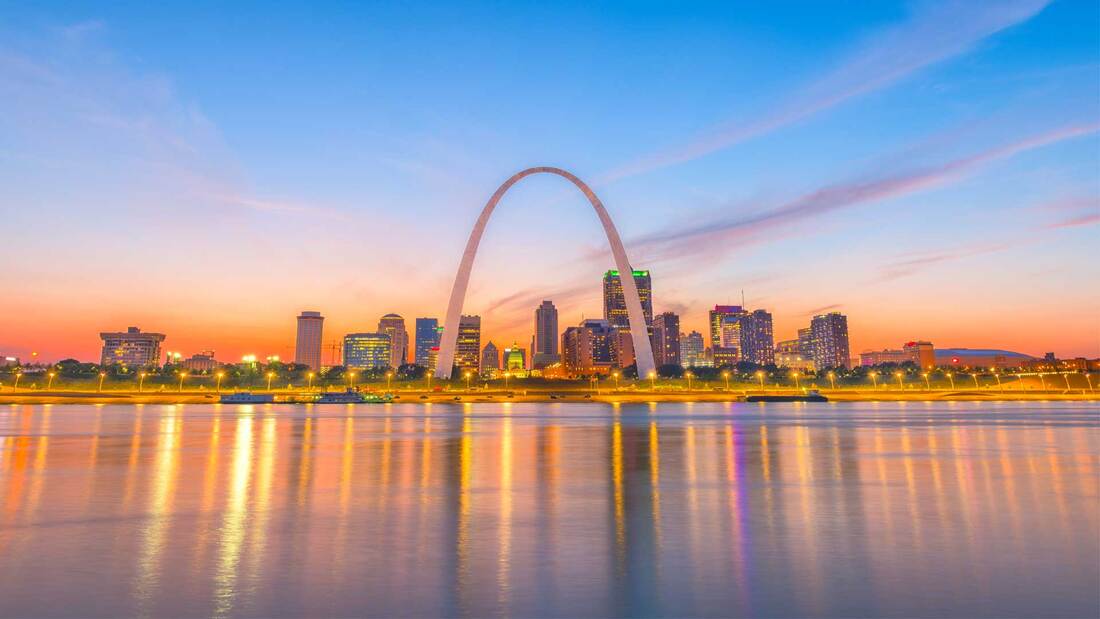
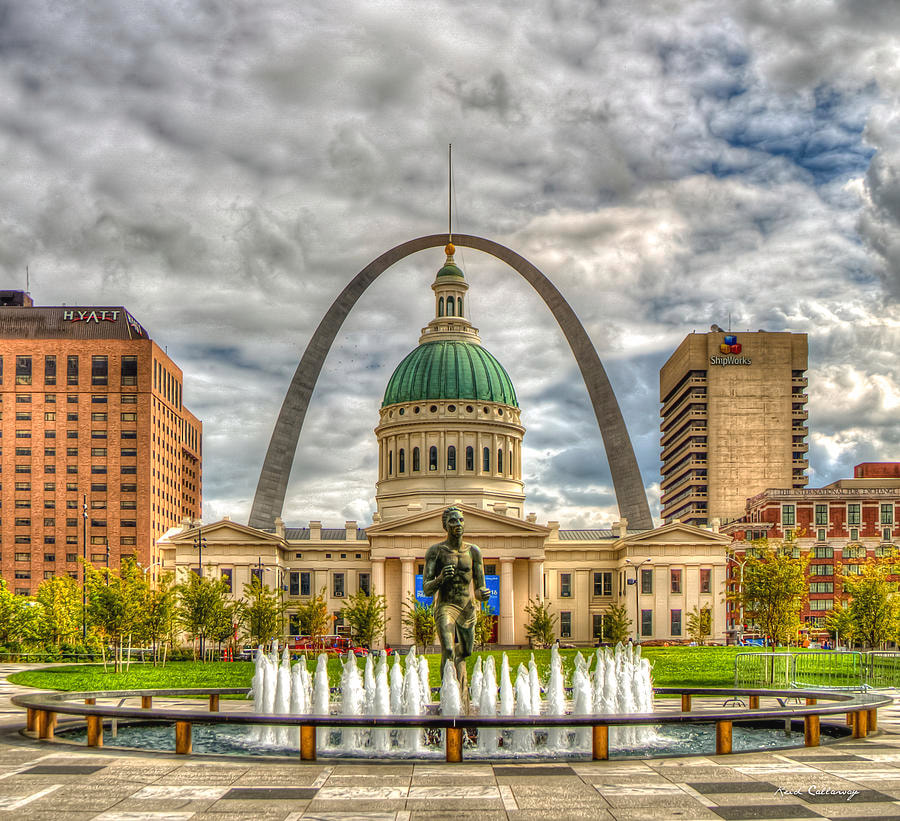

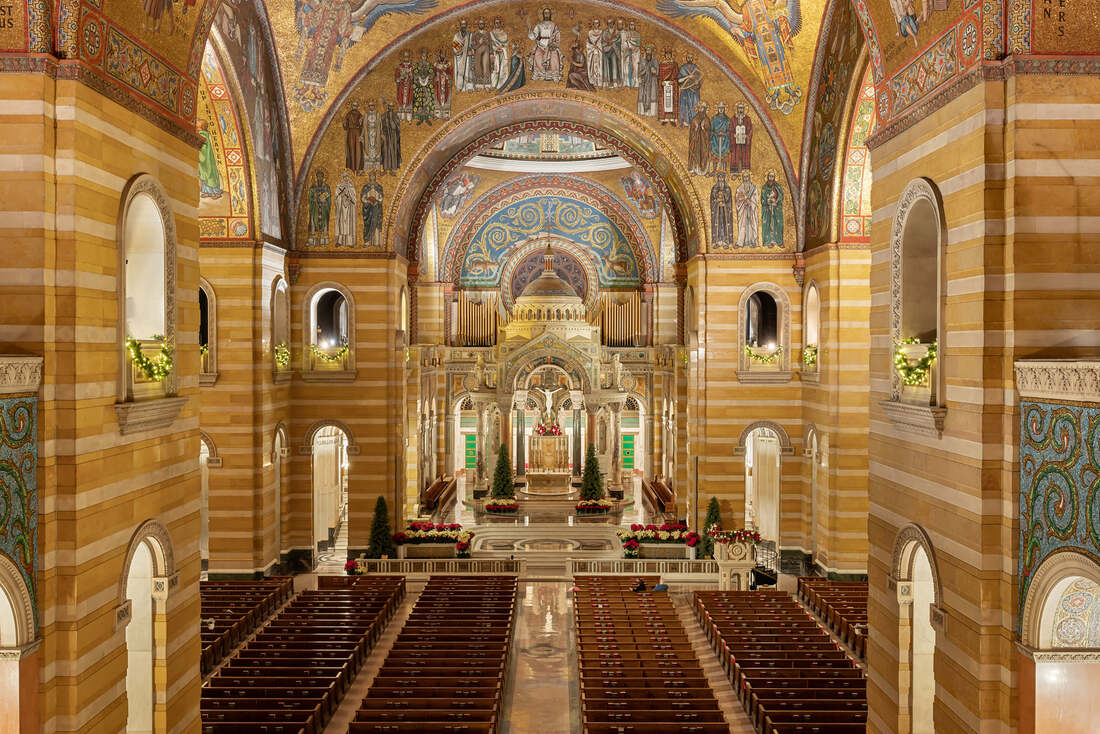








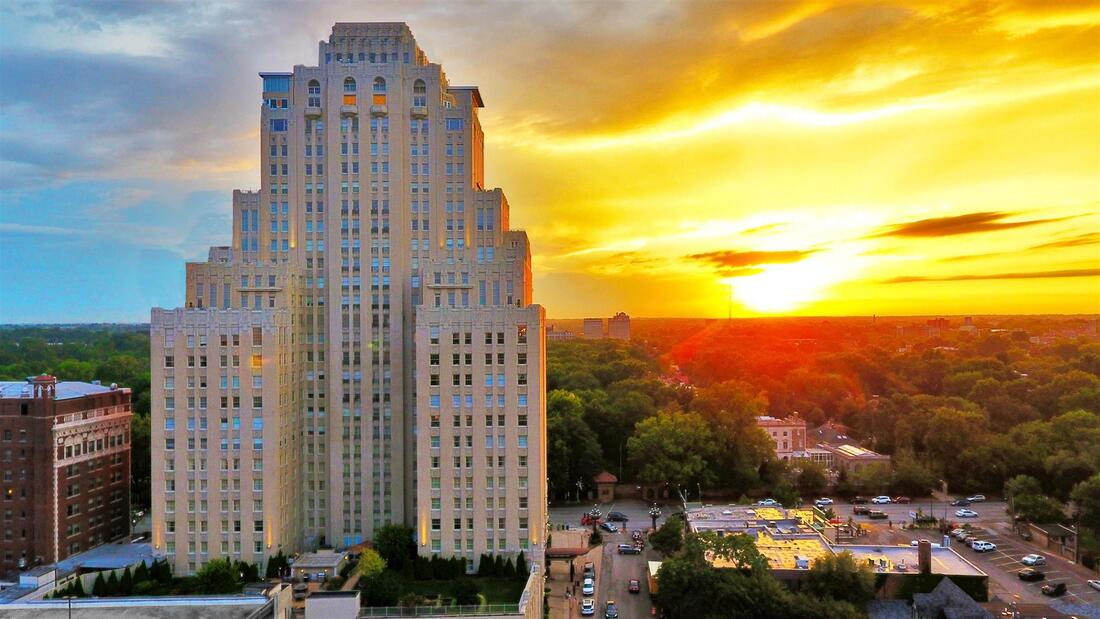
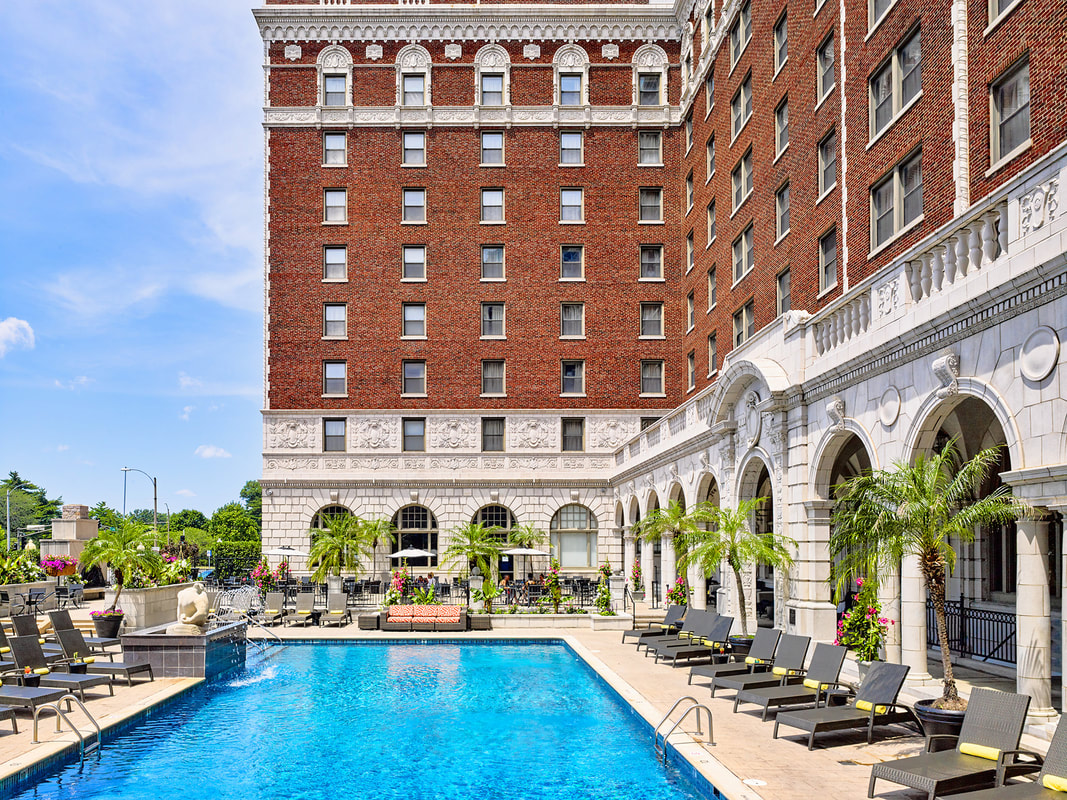

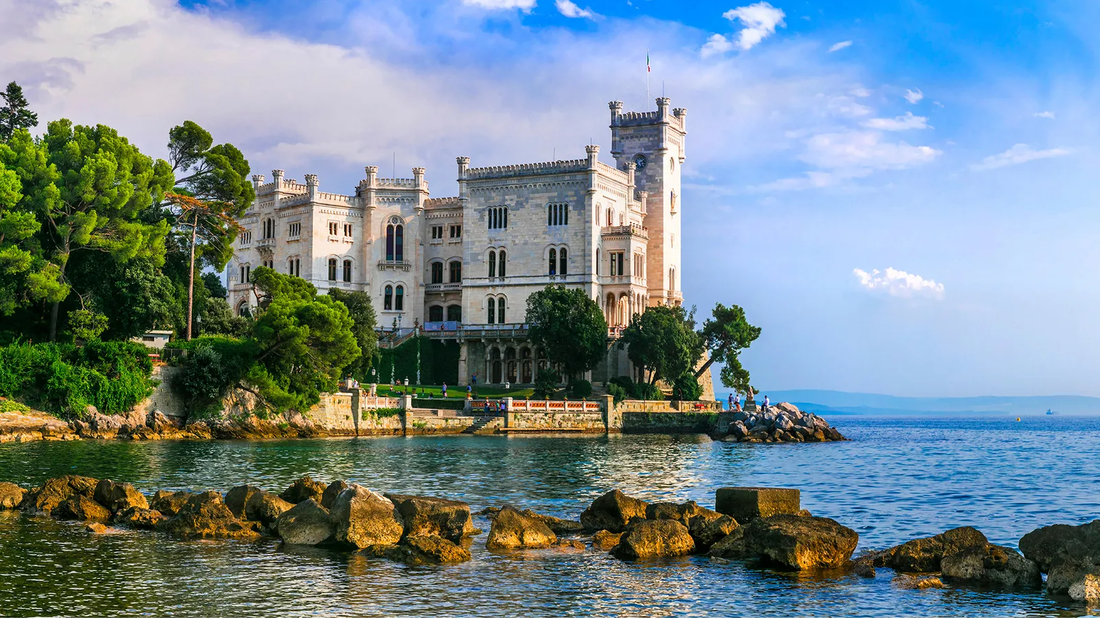


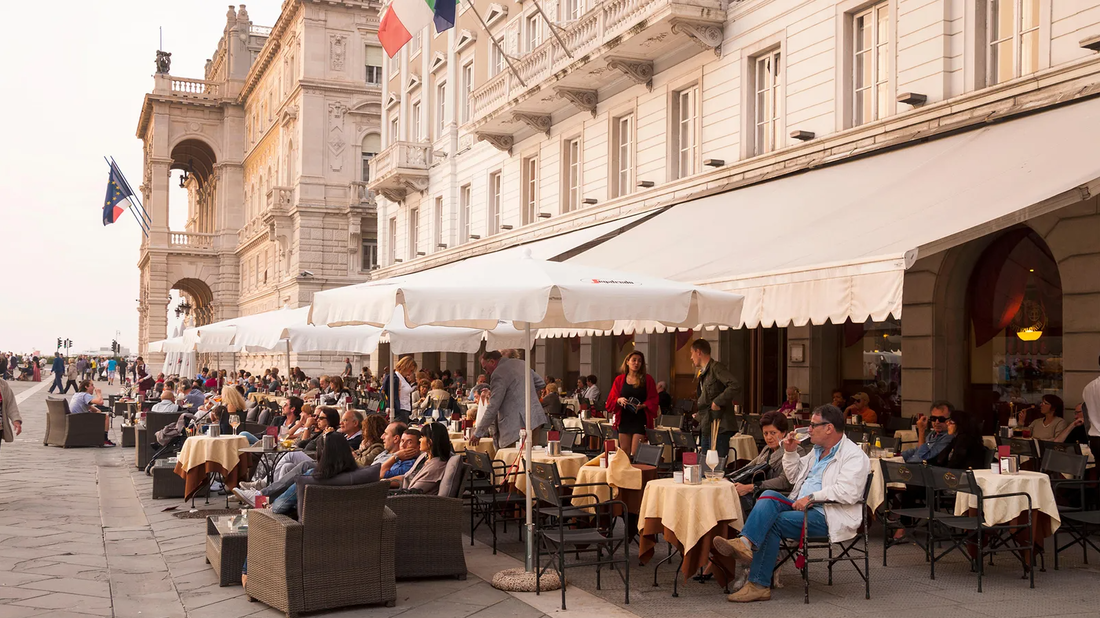


 RSS Feed
RSS Feed
